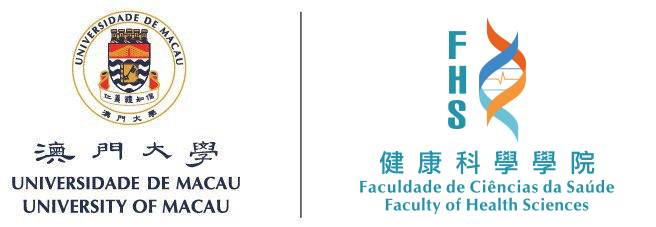A team led by Yunlu DAI, the associate professor in the Faculty of Health Sciences (FHS) of the University of Macau (UM) has made a significant breakthrough in postsurgical cancer therapy in a research collaboration with a team led by Chuxia DENG, chair professor and dean of the FHS. The study proposes a strategy to metastatic sentinel lymph nodes (SLNs)-resecting dilemma in clinical surgery and uncovers that SLN remnants can be reshaped for immunoadjuvant therapy. To enable the reshaping, the research team developed a flex-patch to fuel the metastatic SLN, activating tumour antigen-specific CD8+ T cells and their memory subsets. These T lymphocyte phenotypes exclusive in the metastatic SLN could confer postsurgical models with robust and long-term tumour-specific immune protection. The study has received considerable attention in the field and has been published in the international journal Nature Communications.
Clinical updates suggest conserving metastatic SLNs. To follow up postoperative patients with breast cancer (BC), results show that for those with moderate tumour burdens in SLNs, no axillary dissection does not show inferiority in disease-free survival compared with axillary dissection. Moreover, SLN, as the first leucocyte niche to encounter tumour antigens from the primary tumour, enables the immune response to orchestrate spatiotemporally, which is critical for generating tumour antigen-specific CD8+ T cells. However, tumour invasion easily dysfunctions them. SLN therefore lies at the crossroads of tumour-promoting metastasis and antitumour immunity. To explore the immunosuppressive factors to CD8+ T cells and address them correspondingly will provide an insight into whether metastatic SLNs could be leveraged for postsurgical clinical care.
The team leveraged multiple analytic methods including single-cell RNA sequencing and glycolytic analysis to study metastatic SLNs from the orthotopic 4T1 breast tumour model. In addition to expressing PD-1, activated CD8+ T cells from metastatic SLNs enriched the citric acid cycle and oxidative phosphorylation pathways, which cannot meet bioenergetic requirements per se for killing. Hence, an immune-fueling flex-patch was developed for the SLN reshaping. The flex-patch was implanted on the postoperative wound and spatiotemporally launches immunotherapeutic anti-PD-1 antibodies (aPD-1) and adjuvants (magnesium iron-layered double hydroxide, LDH) into the SLN (Figure 1). Delivered aPD-1 saved immunosuppressive CD8+ T cells with upregulated glycolytic activity but had no influence on naïve ones. LDH nanoadjuvants, different from aPD-1, comprehensively promoted CD8+ T cell effector function (e.g., activation and cytotoxic killing) via Mg2+/Fe3+-mediated shaping. Ultimately, levels of tumour antigen-specific CD8+ T cells in patch-driven metastatic SLNs were significantly upregulated, improving postsurgical immunoadjuvant therapy. This flex-patch established a positively correlated bridge between SLN immunoreshaping and postsurgical treatment.
It is worth noting that the biocompatible chitosan derivative (CC in Figure 1) was selected as the flex-patch matrix, which unaffected postoperative wound healing when reshaping SLNs. An instant implantation of the flex-patch after tumour resection allows for early therapeutic intervention, and simultaneously, avoids extra manipulations (e.g., injection) to patients. Last but not least, loaded agents of flex-patch can be screened and combined flexibly in a wide range of clinical approval, which allows the patch to be compatible with university and customization based on cancer complexity.
Prof. Dai and Prof. Deng are the corresponding authors of the study, and FHS Research Assistant Professor Bei LI, Assistant Professor Kai MIAO, as well as PhD graduate Guohao WANG share the co-first authorship. Others who have contributed to the study involve PhD student Aiping ZHANG, postdoctoral fellows Haipeng LEI and Lisi XIE, FHS research assistants Liangyu SUN, Xinwang YU, and Wenxi LI, PhD student Jie YAN, etc. The Proteomics, Metabolomics and Drug Development Core, Animal Research Core and Biological Imaging and Stem Cell Core of FHS have also provided tremendous support for the study. This project was supported by the National Natural Science Foundation of China (File no.: NSFC 32222090, 32101069 and 32171318),UM (File no.: MYRG2022-00011-FHS), the Science and Technology Development Fund, Macau SAR (File no.: 0109/2018/A3, 0011/2019/AKP, 0113/2019/A2, 0103/2021/A, 0092/2020/AMJ, and 0002/2021/AKP), Shenzhen Science and Technology Innovation Commission, Shenzhen-Hong Kong-Macau Science and Technology Plan C (File no.: SGDX20201103093600004, and SGDX20201103092601008), and Dr. Stanley Ho Medical Development Foundation (SHMDF-OIRFS/2022/002). The full version of the research article can be viewed at https://www.nature.com/articles/s41467-023-38245-7.



